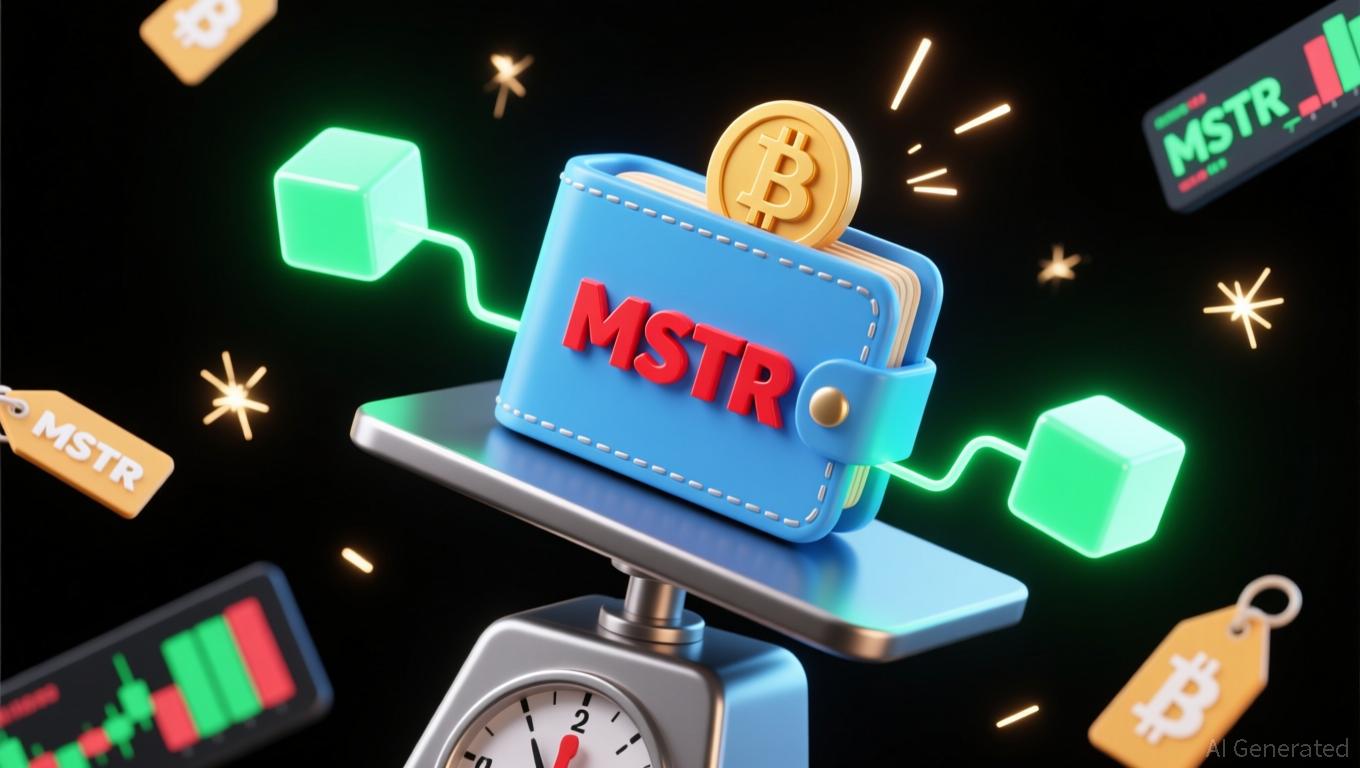What Led to the Latest Bitcoin Price Drop?
- Bitcoin's late 2025 crash stemmed from $3B in ETF outflows and Fed rate uncertainty, triggering a 7.35% price drop. - Institutional exits from IBIT/GBTC contrasted with earlier Q3 2025 inflows that pushed BTC to $126,000, revealing shifting risk appetite. - Fed's 3.75%-4% rate hold and "mildly restrictive" policy eroded crypto confidence, accelerating capital flight to safer assets. - The crash highlighted crypto's growing dependence on macroeconomic cycles and institutional sentiment for price stability.
Institutional Withdrawals: The Spark Behind the Decline
The immediate cause of Bitcoin’s sharp fall was a surge in institutional withdrawals from U.S. spot Bitcoin ETFs. By November 2025, these investment vehicles had seen nearly $3 billion in net outflows, with BlackRock’s IBIT and Grayscale’s GBTC suffering the largest losses. On November 20th alone, IBIT recorded $355 million in outflows, while GBTC saw $199 million leave,
This reversal was especially striking compared to earlier in 2025, when
Macroeconomic Instability: Weighing on Risk Assets
While institutional selling had a direct effect on Bitcoin’s price, broader economic factors likely made the situation worse.
Additionally, diminishing hopes for U.S. rate cuts in 2025 created a negative environment for Bitcoin, which had previously thrived under looser monetary conditions.
Conclusion: Sentiment and Structure Collide
The Bitcoin crash in late 2025 resulted from a combination of institutional actions and economic headwinds. Outflows from ETFs put direct pressure on BTC prices, while the Federal Reserve’s reluctance to ease monetary policy fostered a climate of caution. These developments underscore the growing links between traditional financial markets and the crypto sector—a relationship that will likely shape Bitcoin’s future.
For those investing in Bitcoin, the takeaway is unmistakable: the cryptocurrency’s value is now more closely tied to global economic trends and institutional attitudes. As the market processes these shifts, the outlook will depend on whether confidence in ETFs and central bank decisions can help restore risk appetite.
Disclaimer: The content of this article solely reflects the author's opinion and does not represent the platform in any capacity. This article is not intended to serve as a reference for making investment decisions.
You may also like
BAT Offsets Zimbabwe Declines with Increased Nigerian Exports and Reduced Expenses
- British American Tobacco (BAT) shares rose 10% amid regional performance divergence and cost-cutting, despite Zimbabwe's 7% cigarette consumption decline. - Zimbabwe operations saw 22% revenue drop but turned $3M loss into $11M profit via cost discipline, while Nigeria's $300M export sales earned industry recognition. - BAT's dual strategy of cost optimization in shrinking markets and export-driven growth in high-growth regions boosted investor confidence and operational resilience. - Nigerian exports su

Bitcoin Updates: MSCI's Uncertainty in Classifying Bitcoin Puts MSTR's $59 Billion Worth at Risk
- MSCI's proposed exclusion of MSTR from major indices could trigger $2.8B in outflows, destabilizing its leveraged Bitcoin model. - JPMorgan warns the move reflects a debate over classifying Bitcoin-holding firms as investment vehicles, not operating businesses. - MSTR's stock has fallen 60% since November 2024, with its NAV multiple collapsing to 1.1 as Bitcoin prices drop 30%. - Saylor continues aggressive Bitcoin buying ($1.5B in November) via equity/dilutive debt, straining investor confidence and pus

ZK Atlas Upgrade: Ushering in a New Generation of Blockchain Scalability and DeFi Growth
- ZKsync's Atlas Upgrade (Oct 2025) achieves 15,000 TPS with sub-1-second finality and near-zero fees, addressing blockchain scalability trilemma. - Integrating Airbender proof system and ZKsync OS reduces proof costs to $0.0001/tx, enabling microtransactions and EVM compatibility while slashing bridge reliance. - DeFi benefits from ZKsync Gateway's trustless cross-chain interoperability, breaking liquidity silos and boosting market efficiency as TVL in ZK networks hits $3.5B. - Institutional adoption (Deu
Why ZK is Gaining Momentum in Late 2025: Growth in ZK Infrastructure and Increased Developer Engagement Driving Token Value
- Zero-Knowledge (ZK) technology's 2025 surge reflects structural adoption driven by infrastructure upgrades, developer tools, and institutional partnerships. - ZKsync and StarkNet achieved 15,000 TPS and $3.3B TVL, with Goldman Sachs , Deutsche Bank , and Sony integrating ZK for compliance and scalability. - Developer activity rose 230% via tools like solx Compiler, while ZK-rollups now handle 83% of enterprise smart contracts and $500M+ token valuations. - Institutional validation through MiCA-compliant